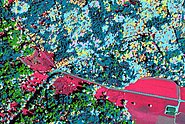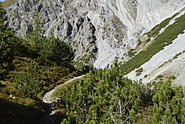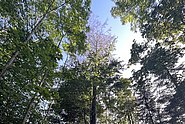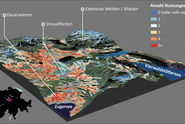Management of forest genetics is shifting from a paradigm focused on increasing timber volume to a prioritization of climate adaptation. Functional traits related to foliar structure, photosynthetic and photoprotective pigments, and stress underlie climate adaptation and have spectral signatures that can be quantified with remote sensing. Common-garden trials present an opportunity to assess the genetic basis of multispectral reflectance dynamics across genotypes. We analyzed multitemporal drone remote sensing of 1350 individual trees from 88 populations from diverse geographic and climatic provenances in a provenance trial of interior spruce (Picea engelmannii, P. glauca, and their hybrids) to assess patterns of genetic differentiation, local adaptation to climate, and hybridization from multispectral reflectance. We quantified early-summer, mid-summer, late-summer, and late-winter multispectral vegetation indices for each population and derived variables describing changes in these indices during winter-to-summer photosynthetic green-up and early-to-late-summer decline. Spectral traits revealed moderate population differentiation (Vpop = 14.4 % — 39.9 %) and significant (P < .005) patterns of local adaptation to provenance warmest-month temperature and elevation. Derived green-up and decline indices revealed additional relationships for coldest-month temperature, date of first frost, precipitation-as-snow, and climatic moisture deficit. Principal components described leaf area greenness, the magnitude of green-up, and seasonal decline in the red edge. Hierarchical clustering of these principal components identified eight geographically and climatically distinct clusters which captured major patterns in hybridization. Seasonal dynamics of vegetation indices, assessed with multitemporal drone remote sensing, can identify important patterns in hybridization and adaptation to climate which are not evident from spectral reflectance assessed at one time of year. These dynamic spectral traits have the potential to quantify the functional basis of local adaptation in common-garden trials and facilitate the selection of resilient genotypes for future climates.
See DOIVoir Institutional Repository DORA




